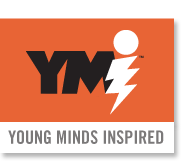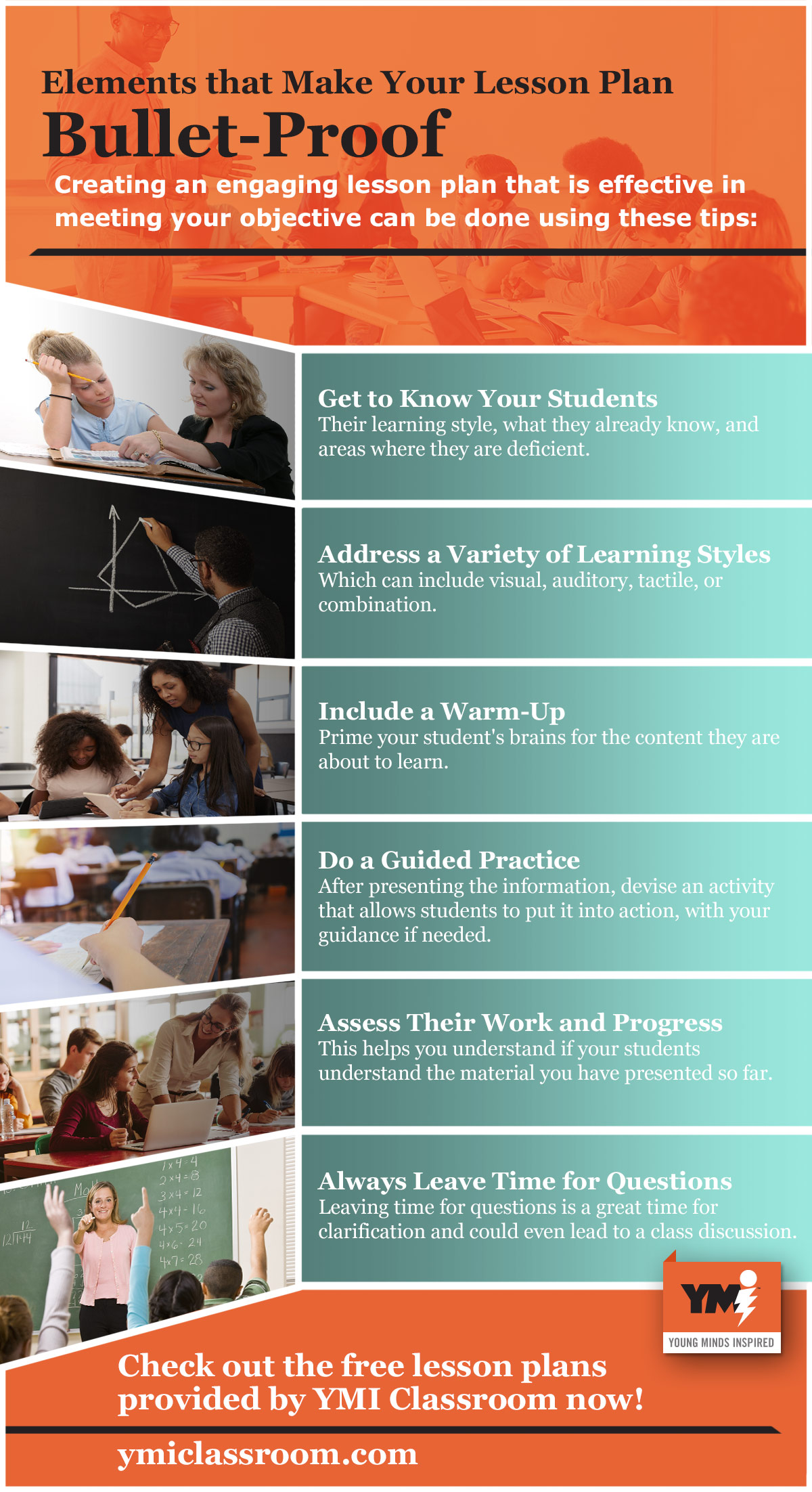No matter what content or subject you are teaching, having a lesson plan prepared not only helps in guiding your day, but provides structure to you and your students! Your lesson plans can be as complex and lengthy or as short and sweet as you want, but no matter which route you choose to go, it is also a good idea to be prepared. Your lesson plan needs to contain elements about what you are teaching, how you are going to teach the material, and what goals and objectives you are creating for your students to meet as a part of the curriculum.
Below, we will discuss some tips on creating your own, seamlessly integrated lesson plan which can apply to any number of subjects and a wide range of content. For a wide range of free online lesson plans, take a look at YMI Classroom! We provide teachers with resources that make teaching a little easier and more fun! Teachers can even become members to gain access to free teaching kits, posters, DVDs, activity sheets, and other free educational resources by mail or email. Join today, or give us a call for more information.
Know your objective
Clearly, it is going to be essential to know the objective of your lesson plan before you start creating it. It could be something like “Students will be able to identify different animal body structures that enable eating, breathing, moving, and thriving,” or for older students, the objective may involve having learned how to solve algebraic equations. The objective of your lesson plan is basically what your students will be able to do at the end of it!
Present materials needed (if necessary)
Make a list of all the necessary materials and ensure that they are available well in advance of the lesson. If your lesson requires materials, like a computer or electronics, ensure that every student has access to these materials, and if not, then provide a substitution list of materials that still follow the lesson plan. Include any links or media that are necessary for your lesson, as well as all of the materials needed.
Include a warm-up
The purpose of a warm-up is to create a structured 5-10-minute period of time in which students engage in a range of possible activators that may or may not tie to the learning objective or the activities that will support the students’ attainment of the attended learning. The warm-up sets up the students’ mental framework, gently introduces them to the concept, and somewhat prepares them for what they will be learning. The warm-up helps stimulate brain activity and helps students move learning from short-term memory to long-term memory.
Implementing the agenda
Once you have come up with your objective, it is a good idea to come up with how you want your students to reach that objective, and in what order. Maybe it is through flashcards, a movie, a series of videos with fil-in-the-blank notes, games, practice questions, or a lecture. The “how” of your lesson plan can be skill-based or conceptual, but it will be more effective if you tell students what to expect so they can stay focused on meeting your objectives. Each part of your agenda should be linked to the completion of the objective and provide clear guidelines for the students.
An agenda helps the students internalize the overall learning and can lead to an overall improvement in student performance. Think of your agenda as the structure within your structured lesson plan. It is the backbone of how you will facilitate your students’ learning and gauges how well they will absorb the information.
Allow time for student practice
After teaching your class the new material, leave time for students to practice. This helps them absorb what they have just learned and is a great way to reinforce what you have just spent time teaching. How you facilitate student practice can be through guided practice, collaborative practice, or independent practice.
- Guided practice – A guided practice walks students back through what they have just learned, letting them add their own input, and maybe even facilitating a student discussion, which helps them gain confidence with the new information.
- Collaborative process – Section your students into groups so they are able to talk with their peers as they explore the concepts that were just taught. Circulate among your class and offer additional instruction or help when needed to clarify points.
- Independent practice – Independent practice can be very useful after collaborative practice, and is a time for students to practice what they’ve learned on their own. Independent practice could be facilitated using worksheets or having students write a short essay.
Assess your student’s understanding
Assessments of lesson plan objectives are ways for you to get to know your students’ academic strengths as well as their weaknesses, and gives you a good idea of what you taught and how effectively they learned it. It is also helpful in giving you some background in whether or not you need to go over your lesson plan again briefly, or offer more guidance for students who struggled with grasping the concept.
Assessments can be done through presentations, games, hands-on activities, quizzes, writing, surveys, worksheets, and even challenges. The assessment should be tied to the lesson’s goals and should inform you of your ongoing instruction. You may choose not to grade these assessments so students don’t feel critiqued for not understanding the lesson plan.
Join the YMI Educator Network
You don’t need to be a part of the YMI Educator Network in order to access our wealth of free online lesson plans! YMI Classom has lesson plans for every grade level, and even home-based learning for a number of concepts, like language arts, STEM skills, social studies, health and safety, and sports and fitness. There is also a list of educator resources that connects teachers to websites that provide tools for lesson planning. Teachers have the option of joining the YMI Educator Network to gain access to free teaching kits, posters, activity sheets, DVDs, and more! Reach out to our team today for questions or feedback.

